Hydraulic Structure & Civil Training Package, Intermediates ,10 Products
Original price was: $1,160.00.$189.00Current price is: $189.00. Student Discount
This Training Package includes 10 practical exercises that are numerically simulated by ANSYS Fluent software for INTERMEDIATE users in the field of Hydraulic Structures and Civil engineering.
Click on Add To Cart and obtain the Geometry file, Mesh file, and a Comprehensive ANSYS Fluent Training Video.To Order Your Project or benefit from a CFD consultation, contact our experts via email ([email protected]), online support tab, or WhatsApp at +44 7443 197273.
There are some Free Products to check our service quality.
If you want the training video in another language instead of English, ask it via [email protected] after you buy the product.
Description
Hydraulic Structure & Civil ANSYS Fluent Training Package, 10 Practical Exercises for INTERMEDIATE Users
This Training Package includes 10 practical exercises that are numerically simulated by ANSYS Fluent software for INTERMEDIATE users in the field of Hydraulic Structures and Civil engineering.
Weir & Spillway
In practical exercise number 1, the Eulerian three-phase flow of water, air, and sand flowing over a circular weir is simulated. The water will enter the computational domain with a velocity of 1m/s and it flows over the sand bed behind the weir. The water flow will lift some of the sand and carry it as it flows over the weir. In project number 2, the two-phase flow of water and air flowing over an ogee spillway is simulated. The water will enter the computational domain with a mass flow rate of 60 tons/s and it flows over the spillway. The standard k-epsilon model is exploited to solve fluid flow equations and the VOF multiphase model is used to investigate the motion and interaction of the existing phases.
Hydraulic Jump
In practical exercise number 3, the hydraulic jump of water flow is analyzed. The VOF approach is utilized to efficiently simulate the water flow inside ambient air. Hydraulic jump is of great importance in agricultural applications and open channel flows where water flow, after a certain distance which can be solved for using the analytical equation, undergoes a significant decrease in velocity and increase in flow height.
Dam & Cascade
Numerical simulation of lifting dam has been performed in project number 4. The model is used to simulate two fluid phases, and the purpose of this project is to investigate the changes in the free surface of the fluid over time. Two models are reviewed in this project. In the first model, the flow continues its path after crossing the dam, but in the second model, it encounters an obstacle. The goal of project number 5 is to simulate a cascade with an interrupted water inlet. The Eulerian multiphase model has been used. The water is entering the domain with the speed of 0.3 m/s with gravity considered as -9.81 m/s-2 on the y-axis.
Turbine
Problem number 6 simulates the water flow inside a Francis water turbine. A water turbine is a turbomachinery that converts kinetic energy from water flow or potential energy from water height differences into rotational motion. Francis turbines are one of the types of water turbines that have the ability to use both kinetic and potential energy for power generation at the same time due to the location of their blades. In project number 7, the water flow passing over the Kaplan turbine is investigated. The Kaplan turbine rotates at 3300 rpm and sucks the water in. RNG k-epsilon model is exploited to solve turbulent flow equations. It should be noted that the MRF (Frame Motion) option has been activated to model the rotation of the turbine.
In practical exercise number 8, we are going to study the hydrodynamics of the Kaplan turbine. The geometry included a small size Kaplan turbine with 125 [mm] as a new prototype. Our static domain consists of 8 [m] long rectangle, and our rotary domain is the Kaplan geometry with 16.5 RPM as the angular velocity. In project number 9, an Archimedes Screw Turbine (AST) consisting of 3 blades is simulated in two models. The first model is unsteady Frame Motion, and the second one is an unsteady Mesh Motion. Considering the conception of both methods, the turbine in the frame-motion method is in a stationary state, and the fluid around it is rotating, while in the Mesh Motion method, the rotating zone that contains the Screw Turbine rotates independently.
Open Channel
finally, in analysis number 10, the flow inside an open channel which has a 180-degree bend, with a side outlet is investigated. The standard k-epsilon model is used for solving turbulent flow equations. Also, a multi-phase VOF model is activated to simulate two phases of water and air inside the canal.
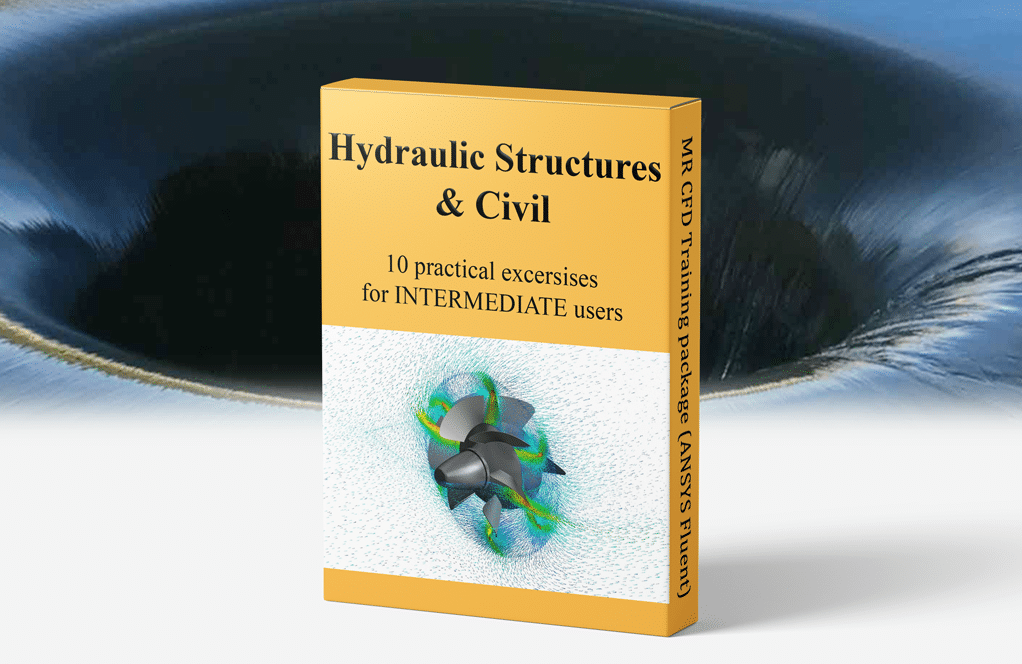
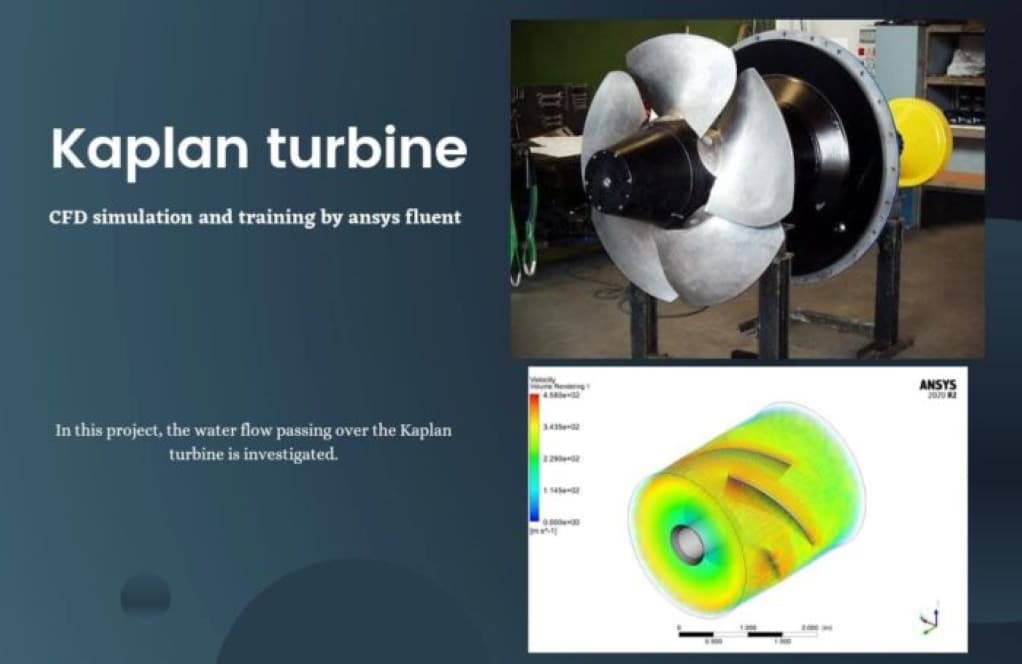
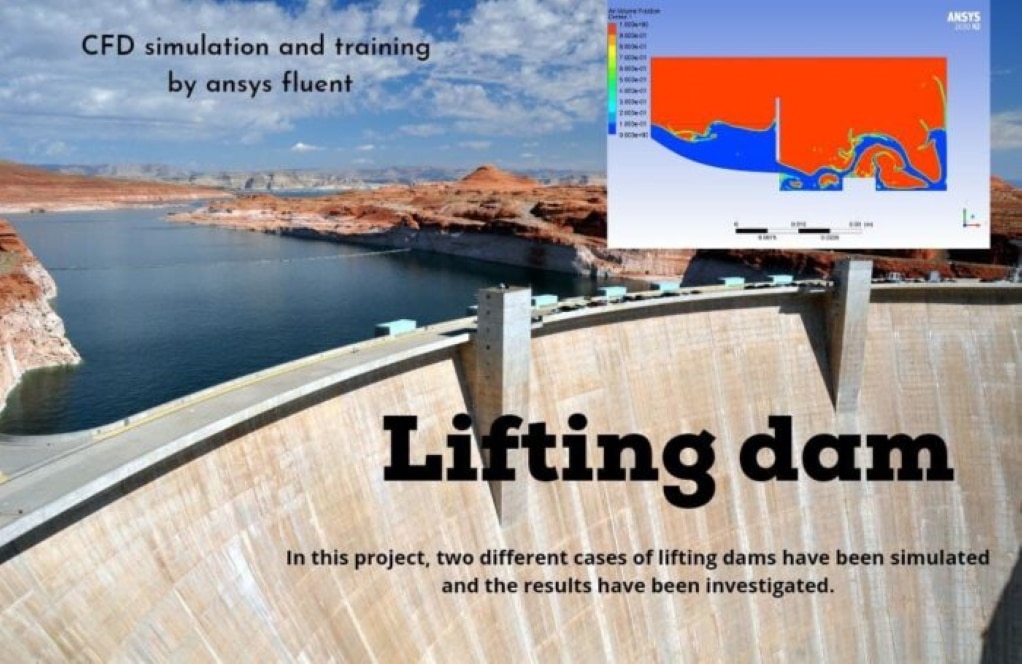
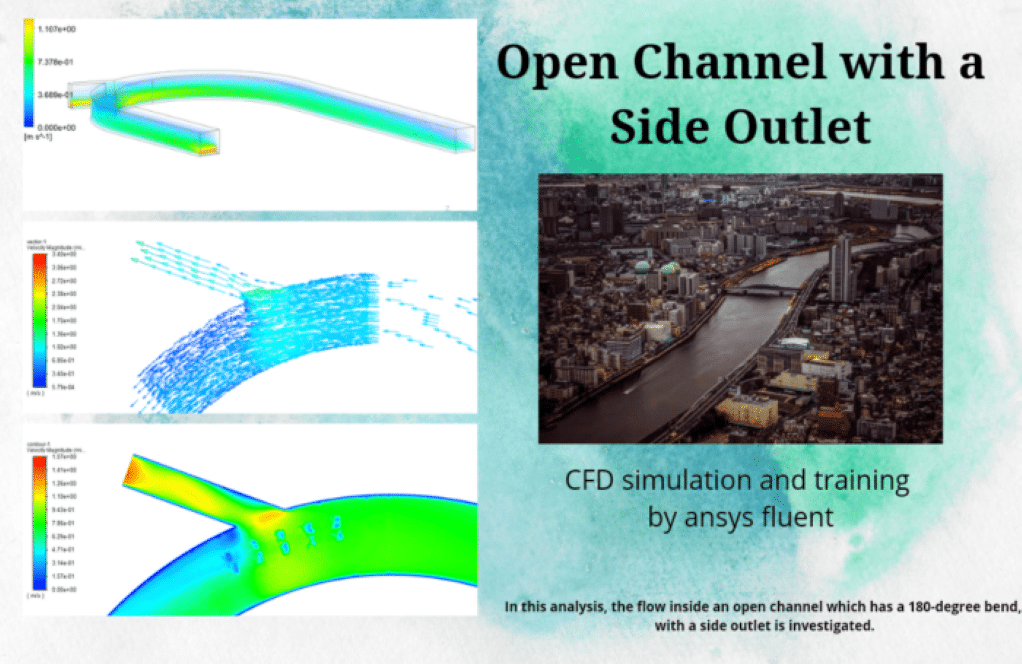
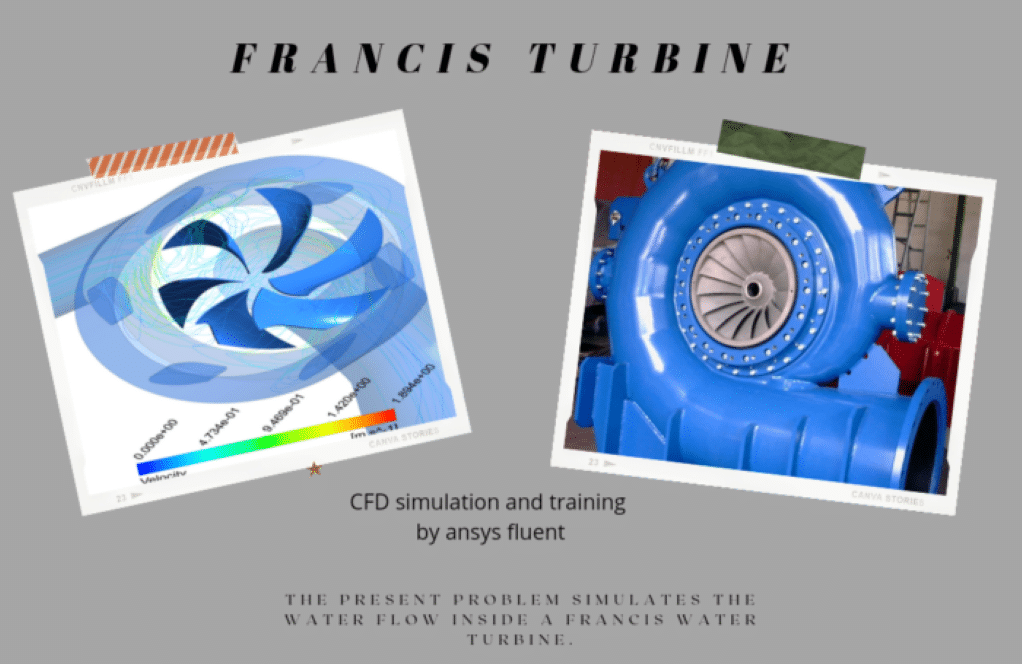

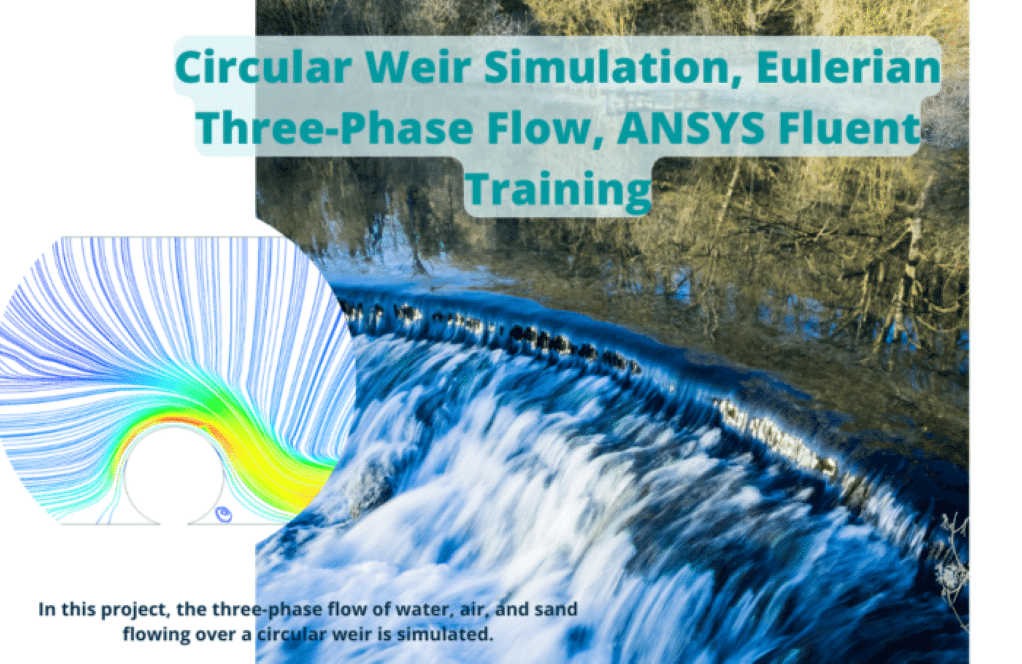
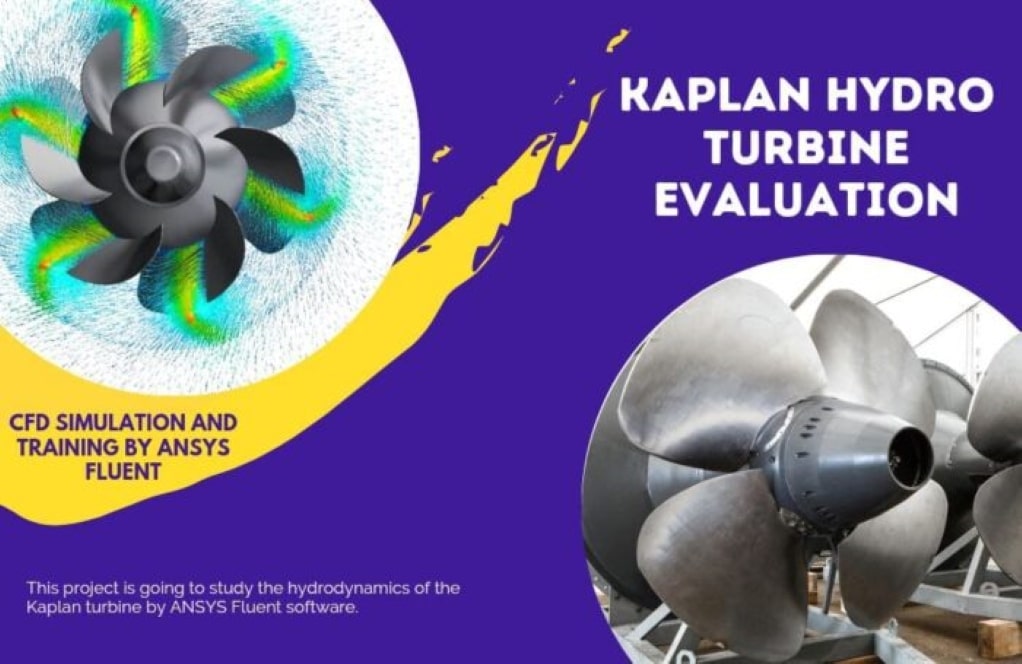
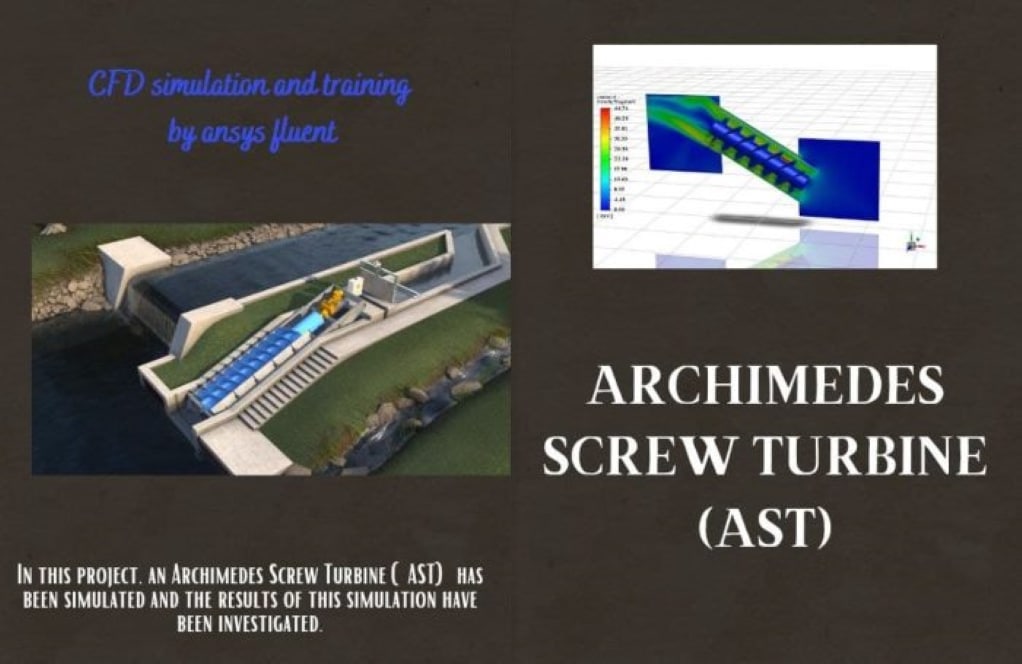
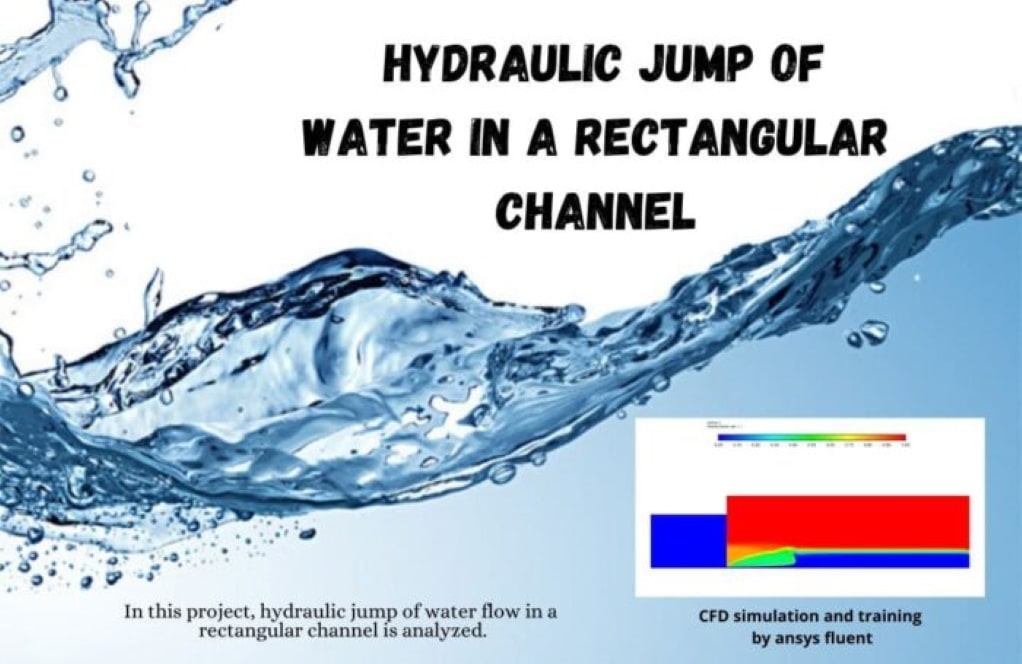
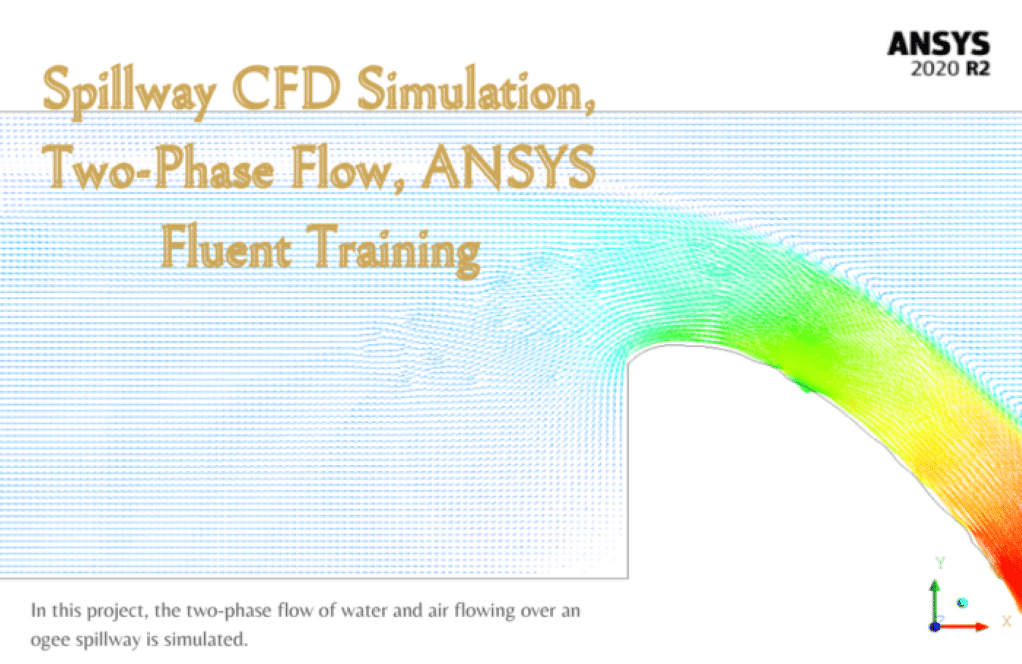
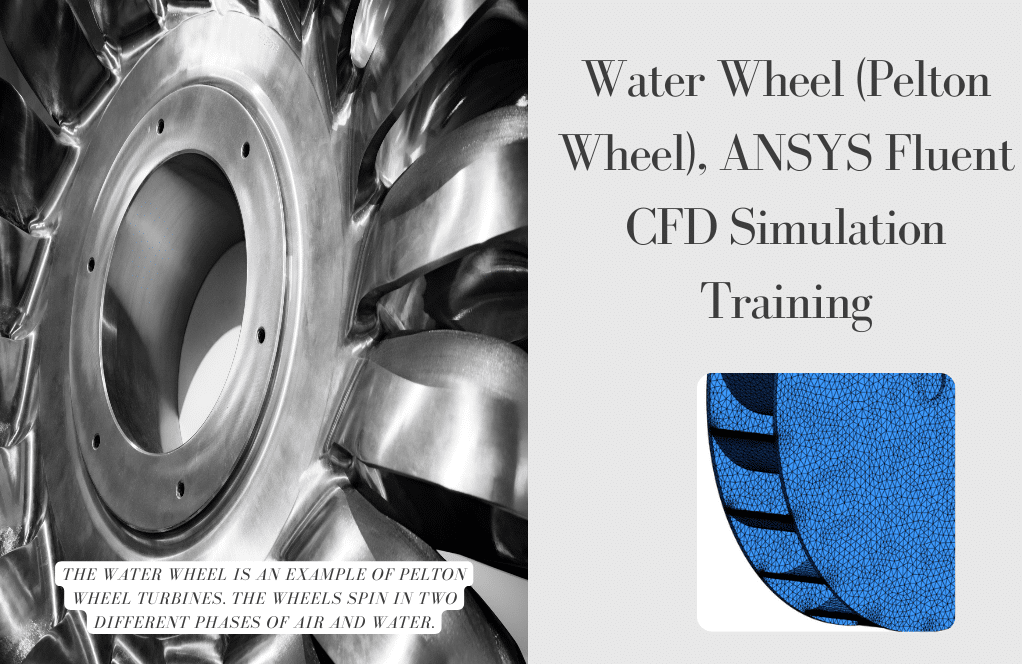
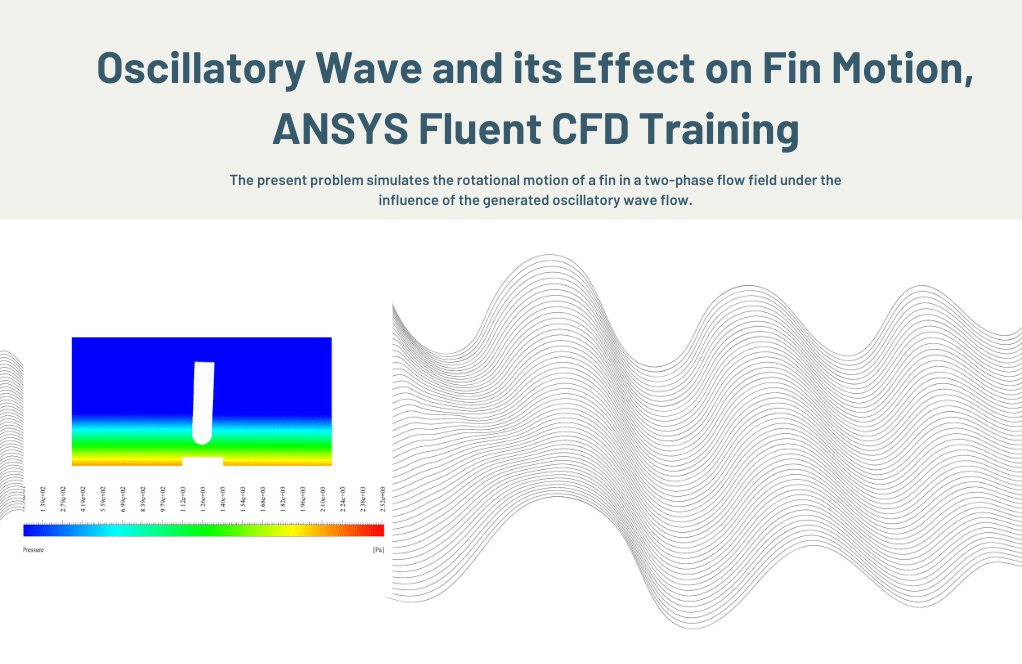
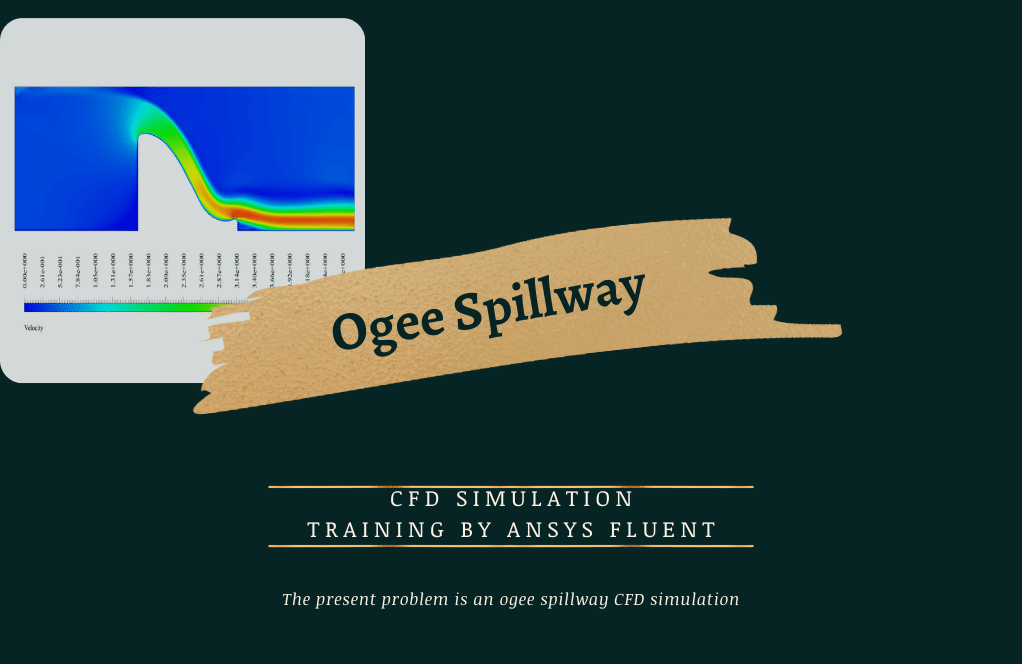
Eloisa Goodwin V –
I’ve finished several of the exercises in the Hydraulic Structures & Civil package, and they all appear very well-crafted. I’m particularly impressed with the diversity of the scenarios—frankly, it has been a robust learning experience.
MR CFD Support –
Thank you for your kind words! We’re delighted to hear about your positive experience with our exercises and that you’re finding the training package diverse and valuable. If there’s anything else you wish to explore or need assistance with, don’t hesitate to reach out!
Kassandra Schumm –
This training package has remarkably enhanced my understanding of hydraulic structures in civil engineering simulations using ANSYS Fluent. The diverse set of examples from weirs to hydraulic jumps and various turbines prepared me well for real-world scenarios. Every exercise builds on the previous one, ensuring that fundamental knowledge is reinforced while introducing more complex ideas in a digestible manner. Absolute win for intermediate learners wanting to nail the practical application of theory!
MR CFD Support –
Thank you for your wonderful feedback! We are thrilled to hear that our Hydraulic Structure & Civil ANSYS Fluent Training Package has significantly contributed to your understanding and skills in this area. Your success is our main goal, and we’re glad to provide resources that help bridge the gap between theoretical knowledge and practical application. We appreciate your positive review and look forward to supporting your future learning endeavors!
Dayne Monahan Jr. –
The variety of projects in this training package seems fantastic! The inclusion of a range of hydraulic structures, including weirs, spillways, and different types of turbines is impressive. Can’t wait to apply these practices to my own civil engineering projects.
MR CFD Support –
Thank you for your positive feedback about the Hydraulic Structure & Civil Training Package. We’re thrilled to hear you find the variety of projects impressive and that you’re excited to apply what you’ve learned to your own engineering projects. We’re always here to support your learning journey. Best of luck with your civil engineering endeavors!
Amely Smitham –
The training content sounds comprehensive for understanding hydraulic and civil simulations in ANSYS Fluent. The variety of exercises covering different structures like weirs, spillways, and turbines gives an opportunity to learn diverse applications. It’s great to have access to both geometry and mesh files, as well as the training movie for guidance.
MR CFD Support –
Thank you for your positive feedback! We are pleased to hear that you find the Hydraulic Structure & Civil ANSYS Fluent Training Package comprehensive and useful for learning the diverse applications of CFD in hydraulic and civil engineering projects. We are glad that the included resources such as geometry, mesh files, and training movies are helpful for your learning experience. If there is any particular topic you are interested in or need further assistance with, please let us know.
Lynn Monahan –
The practicality of these exercises seems very relevant to engineering applications! Could you also provide guidance on the selection criteria for choosing the appropriate multiphase model for each scenario?
MR CFD Support –
Thank you for your commendation! When selecting an appropriate multiphase model, one should consider the physical interactions between the phases, the relative motion, and the volume ratio of the different phases present. The VOF (Volume of Fluid) model is suitable for cases where a sharp interface is present, such as free surface flows. On the other hand, the Eulerian model is suitable for flows with dispersed phases, such as sediment in water. Specific applications and constraints define the best suited multiphase model type. Our training materials explain in detail the reasons behind choosing particular models for the various exercises included in the package.
Tressie Gutmann –
I’m thrilled with the Hydraulic Structure & Civil Training Package. The practical exercises became increasingly challenging and allowed me to deepen my understanding of fluid mechanics in civil engineering contexts. Each tutorial built on the last, reinforcing my skills and increasing confidence in using ANSYS Fluent. Being able to work on a variety of scenarios like weir flows, hydraulic jumps, and turbine simulations was incredibly valuable. I particularly appreciated the detailed training videos and the opportunity to analyze different types of water structures. Fantastic resource for intermediate users looking to expand their CFD capabilities in hydraulic and civil engineering!
MR CFD Support –
Thank you for the glowing review! We’re delighted to hear that our training package has significantly contributed to your understanding and skill set in CFD applications within hydraulic and civil engineering. Your feedback is greatly appreciated, and we’re thrilled to know that both the diversity of practical exercises and our comprehensive training materials have enhanced your learning experience. If you ever have any questions or need further assistance as you continue exploring complex simulations, please do not hesitate to reach out to us.
Percy Wilkinson –
I thoroughly enjoyed the Hydraulic Structure & Civil ANSYS Fluent Training Package. The diversity of scenarios from weirs and spillways to turbines and open channels gave me a comprehensive insight into fluid dynamics, which is vital for my engineering projects. The step-by-step guidance provided in the training videos was extremely helpful in understanding complex concepts.
MR CFD Support –
We’re glad to hear that you found our Intermediate Hydraulic Structure & Civil Training Package to be helpful and comprehensive. Thank you for sharing your positive experience. Your feedback motivates us to continue delivering high-quality learning materials for engineering professionals like yourself.
Turner Gutkowski –
I just completed the ‘Hydraulic Structure & Civil Training Package’ for Intermediates, and I must say it was thoroughly enlightening! The assortment of 10 varied exercises really enriched my understanding of the dynamics involved in hydraulic and civil engineering applications. What I particularly appreciate are the meticulously crafted step-by-step instructional videos which made following along and understanding ANSYS Fluent’s more complex features achievable. I was especially intrigued by the detailed simulation of the Francis water turbine – seeing the kinetic and potential energy conversion in action was fascinating!
MR CFD Support –
Thank you so much for your wonderful feedback! We’re delighted to hear our ‘Hydraulic Structure & Civil Training Package’ has contributed to your better understanding of the hydraulic and civil engineering principles within ANSYS Fluent. It’s particularly rewarding to know that our instructional materials, including our comprehensive videos, have been helpful in guiding you through the complexities of the software. Your specific mention of the Francis water turbine simulation is appreciated – we take great pride in the accuracy and detail of our exercises to ensure a valuable and educational experience for our users. If there’s any further knowledge or any other topic you’d like to explore, please feel free to reach out!
Jamal Flatley –
I’ve found the Hydraulic Structure & Civil Training Package excellent for visualizing and understanding complex fluid dynamics in civil engineering contexts. The variety of simulations like weirs, spillways, and turbines has significantly enhanced my comprehension of hydraulic systems. Definitely a great learning resource for intermediate users.
MR CFD Support –
We appreciate your feedback and are thrilled to hear that our Hydraulic Structure & Civil Training Package has been valuable in expanding your understanding of hydraulic engineering and fluid dynamics. Thank you for choosing our product to aid in your learning journey. If you have any further questions or need more information about our learning tools, feel free to reach out.
Crystel Stokes –
I’ve completed all of the practical exercises included in the Hydraulic Structure & Civil ANSYS Fluent Training Package and I found them extremely beneficial for my studies. The real-world applications and detailed guidance in the training materials have helped me understand the complexities of each simulation. I appreciated the diversity of projects from weirs and spillways to different types of turbines and open-channel flows. Also, the inclusion of both Eulerian and VOF multiphase models was particularly insightful. Overall, this training has been invaluable for augmenting my skills in hydraulic and civil engineering simulations.
MR CFD Support –
Thank you very much for your comprehensive feedback on our Hydraulic Structure & Civil ANSYS Fluent Training Package. We’re delighted to hear that the package has contributed significantly to your learning experience and helped enhance your understanding of hydraulic and civil simulations. Your satisfaction with the diversity and real-world application of the exercises reaffirms our commitment to providing high-quality training material. We look forward to continuing to support your educational journey and are here for any further assistance you might need with your studies.
Prof. Fidel Lind I –
I just completed the Hydraulic Structure & Civil ANSYS Fluent Training Package and the practical exercises were incredibly enlightening. The variety of simulations from diverse hydraulic structures broadened my understanding significantly. The step-by-step tutorials were particularly helpful for an intermediate user like myself to get a solid grasp of the applications.
MR CFD Support –
Thank you for your positive feedback! We are thrilled to hear that the practical exercises and the Training Package met your expectations and provided valuable insights into hydraulic structures and civil engineering applications. It’s always rewarding to know our tutorials are helping users enhance their skills and understanding. Should you have any more questions or seek further assistance, feel free to reach out!
Sonny Osinski –
This package has been a fantastic resource in deepening my understanding of various hydraulic and civil engineering problems. Each exercise melded challenging simulations with real-world relevance. Very satisfied with the depth of the content covered in intermediate scenarios!
MR CFD Support –
Thank you for taking the time to leave such a positive review of the Hydraulic Structure & Civil Training Package for intermediate users. We’re thrilled that you found the practical exercises valuable and that they deepened your understanding of the field. Your feedback truly means a lot to us. If you have any further questions or need additional assistance, please do not hesitate to reach out. Keep learning and growing!
Betty Rogahn –
I’ve recently completed the Hydraulic Structure & Civil Training Package and working through these complex simulations has been a rewarding challenge. The variety of hydraulic phenomena covered, from weir and spillway behavior to the intricacies of turbine mechanics, provided a solid grounding in practical fluid dynamics within civil engineering frameworks. The detailed guidance in the training materials meant I could focus on understanding the principles behind each simulation without being overwhelmed. A big thank you to the MR CFD team for compiling such a thorough and user-friendly learning resource.
MR CFD Support –
We are thrilled to hear that you found our Hydraulic Structure & Civil Training Package valuable and educational! It’s our goal to provide comprehensive training tools that cover a wide range of applications, and we’re glad you appreciate the in-depth materials. Thank you for your kind words, and we look forward to providing you with more quality learning resources in the future!
Dr. Lilyan Mitchell V –
I’m thrilled with the depth of the Hydraulic Structure & Civil Training Package! The variety of simulations, from weir & spillway projects to complex turbine analysis, perfectly complemented my intermediate skills. The hands-on experience with multiphase flows and turbulence models has been invaluable. What an enriching way to learn and apply CFD in civil projects!
MR CFD Support –
Thank you for your kind words! We are delighted to hear that you’ve found the Hydraulic Structure & Civil Training Package to be enriching and suitable for your learning level. Your feedback is greatly appreciated and motivates us to continue providing high-quality learning experiences. If you ever have any more insights to share or questions as you continue your educational journey, please don’t hesitate to reach out.
Eino Predovic –
I just completed the Hydraulic Structure & Civil Training Package and found the diversity in simulations extremely beneficial! Especially, the cascade simulation with interrupted water inlet using the Eulerian multiphase model helped me in understanding fluid behaviors in complex scenarios.
MR CFD Support –
Thank you for sharing your positive experience with our Hydraulic Structure & Civil Training Package. It’s fantastic to hear that the cascade simulation was particularly instructive for you. Our goal is to provide comprehensive learning materials that help our users tackle a wide range of fluid dynamics challenges, so we’re pleased you found the simulations diverse and beneficial.
Cydney Mohr –
Absolutely enjoyed working through the Hydraulic Structure & Civil Training Package. As someone with intermediate competency in CFD and ANSYS Fluent, the step-by-step tutorials improved my understanding significantly. The variety of projects, especially the turbine simulations, are so well-detailed, it’s like having an expert guiding you through every move. I particularly appreciated the inclusion of new prototypes like the Kaplan turbine, which expanded the breadth of my learning. Tricky concepts became clearer, I’m beyond satisfied!
MR CFD Support –
Thank you for your positive feedback! We’re thrilled to hear that you found the Hydraulic Structure & Civil Training Package educational and helpful. It’s great to know that the detailed tutorials and the variety of simulations that include new prototypes like the Kaplan turbine enhanced your understanding of CFD applications in hydraulic structures and civil engineering. We strive to provide clear, thorough, and varied learning resources, and we’re glad they’ve made tricky concepts clearer for you. Your satisfaction is our success. Should you wish to further your knowledge, keep an eye on our new and updated training products!
Naomie Jacobi –
I’m absolutely thrilled with the Hydraulic Structure & Civil Training Package. The selection of exercises provided a robust understanding of different hydraulic scenarios. Particularly impressive was the detailed consideration of multi-phase interactions and dynamic mesh techniques, which are fundamental to real-world applications.
MR CFD Support –
Thank you for your kind words! We’re delighted to hear the training package met your needs and provided valuable insights into complex hydraulic structures and civil engineering scenarios. Your feedback is greatly appreciated, and we look forward to continuing to support your learning journey.
Matteo Hammes –
I’ve been working on several projects requiring an understanding of hydraulic structures and was thrilled to come across this training package. The balance between theoretical knowledge and practical exercises strikes the perfect chord for someone of intermediate skill level. Each practice problem pushes my understanding just enough to learn without being overwhelming. The simulations of the ogee spillway, hydraulic jump, dam break, and turbines were particularly insightful.
MR CFD Support –
We’re thrilled to hear that our Hydraulic Structure & Civil ANSYS Fluent Training Package has been beneficial to your work! It’s our goal to provide a challenging yet manageable learning experience for those honing their CFD skills. Thank you for letting us know that the balance of theory and practical application is hitting the mark. If you have further feedback or need assistance as you progress through the exercises, don’t hesitate to reach out!
Ethan Hand –
I’ve gone through several of these intermediate exercises and I am quite satisfied with the training package. The step-by-step approach and practical simulations have greatly enhanced my understanding of hydraulic structures using ANSYS Fluent. The range of applications from weirs and spillways to turbines and open channels has provided me with a broad learning experience. Thank you for providing such a targeted and effective training kit.
MR CFD Support –
We’re thrilled to hear that you’ve found value in our Hydraulic Structure & Civil Training Package! Your positive feedback is greatly appreciated, and it motivates us to continue creating high-quality, practical exercises that assist our users in mastering the ANSYS Fluent software. Thank you for choosing our training kit. If you have any further questions or need additional support, do not hesitate to reach out!
Monique Stehr –
I’m thoroughly impressed with how the Hydraulic Structure & Civil ANSYS Fluent Training Package could handle complex simulations dealing with hydraulic jumps and turbine physics. Every exercise provided new insights and taught me practical approaches to problem-solving in hydraulic and civil engineering applications.
MR CFD Support –
Thank you for your kind words! We are thrilled to hear that the training package proved insightful and practical for your learning in hydraulic and civil engineering. It’s our goal to create resources that empower our users to tackle complex simulations with confidence. We appreciate your feedback and are glad to have been a part of your educational journey.